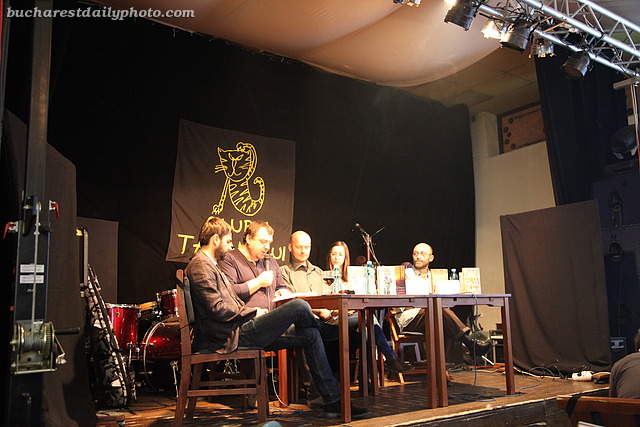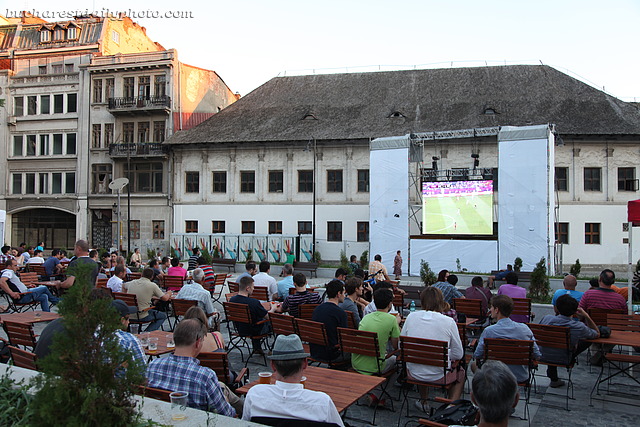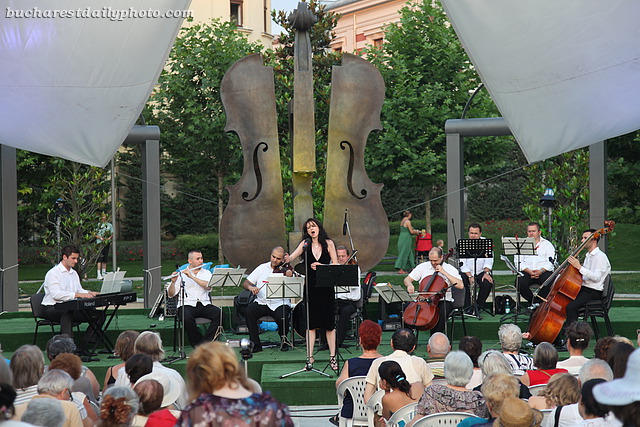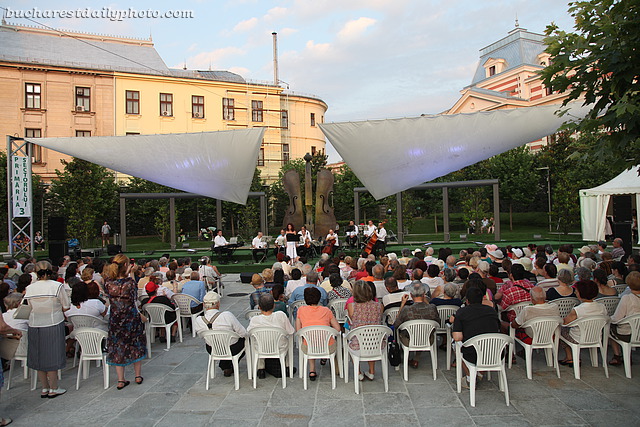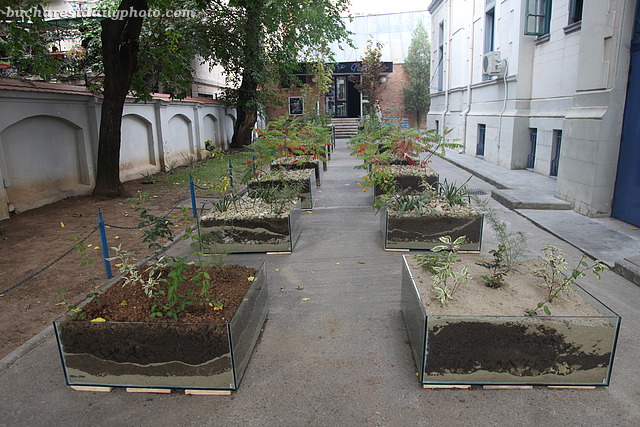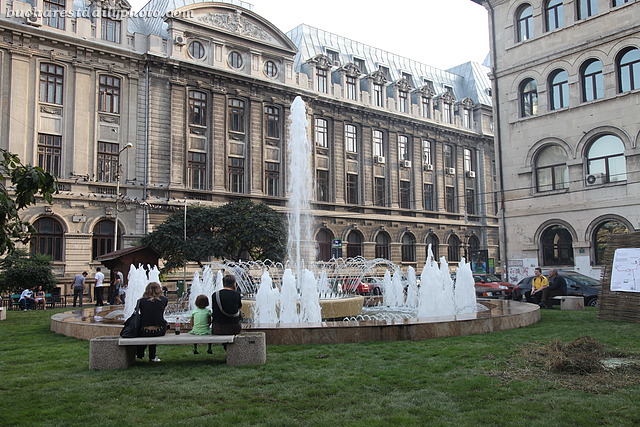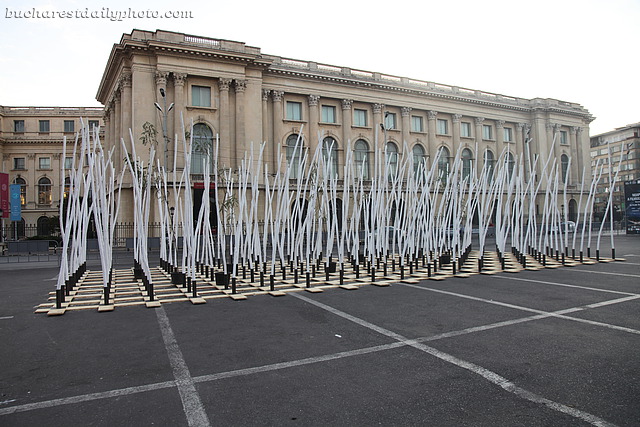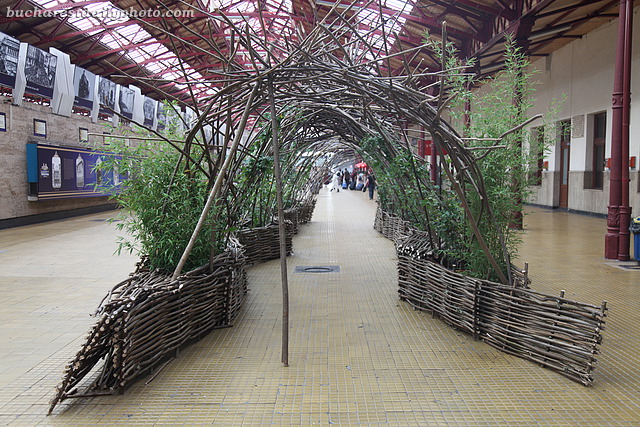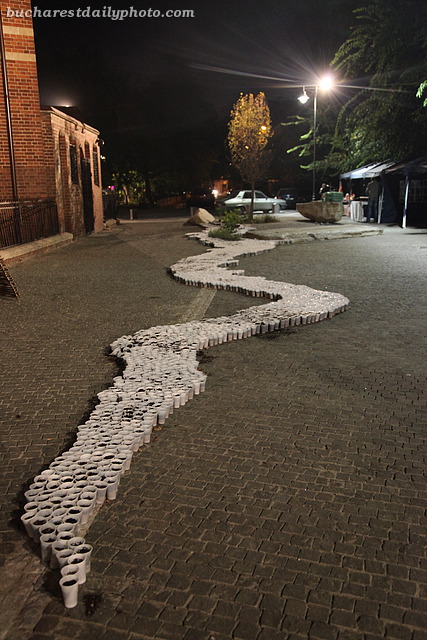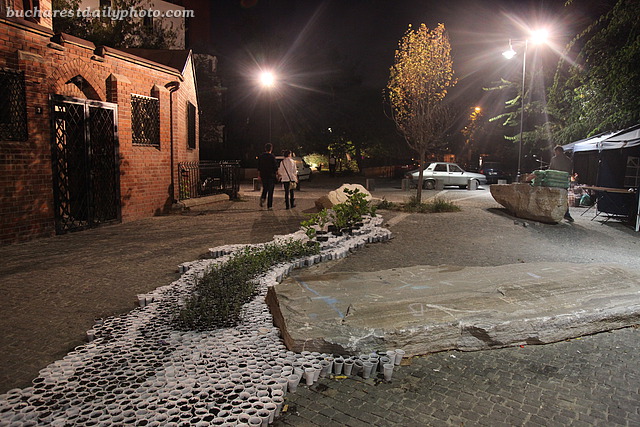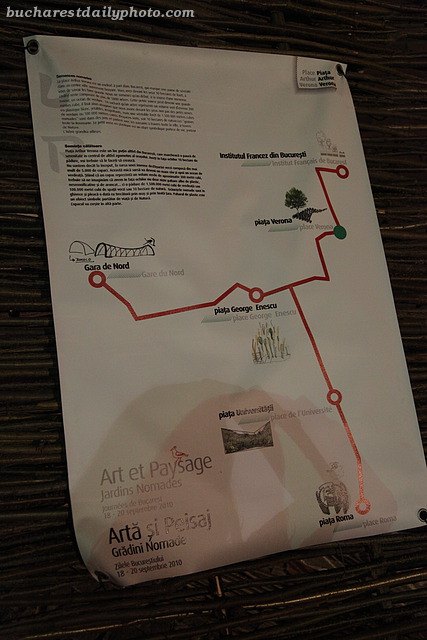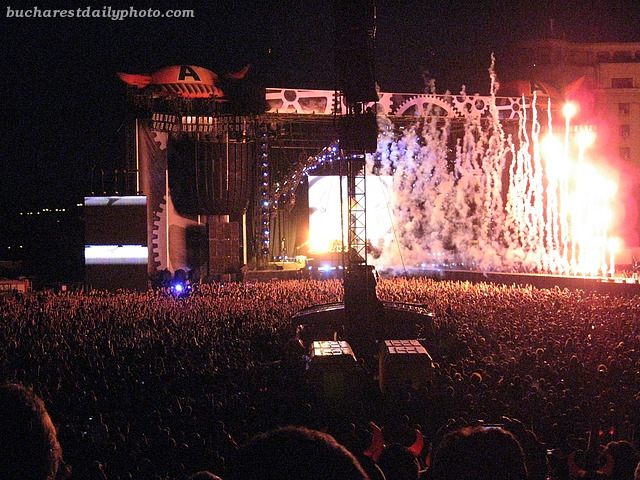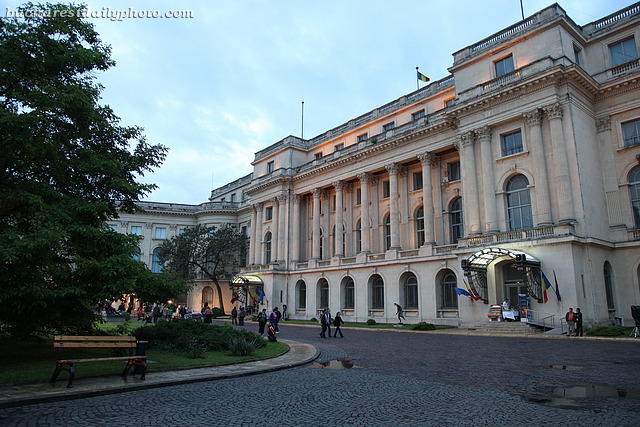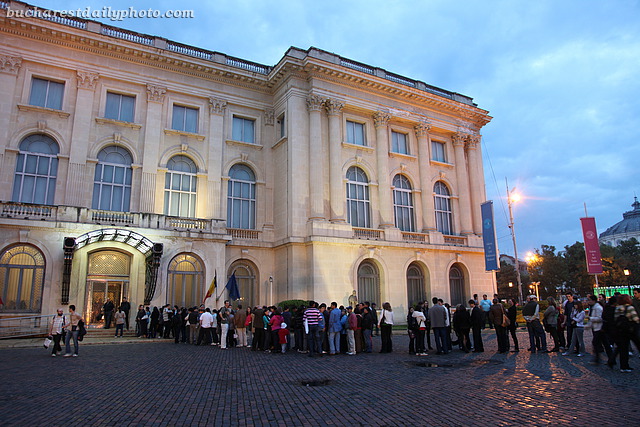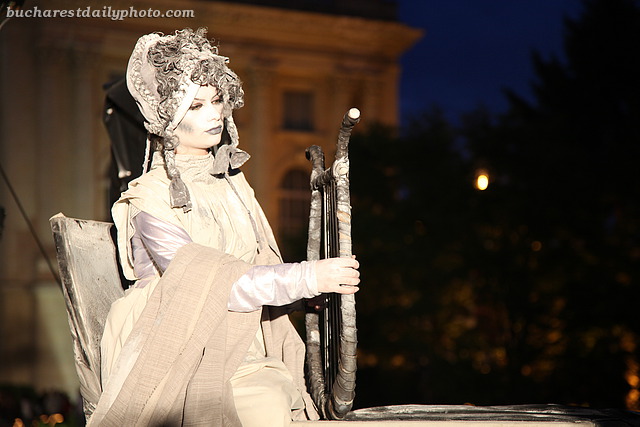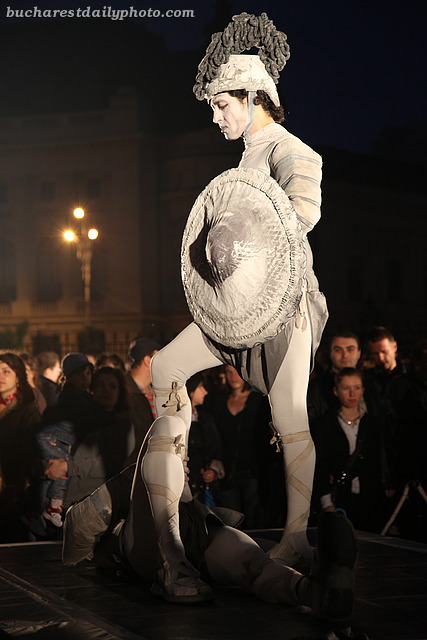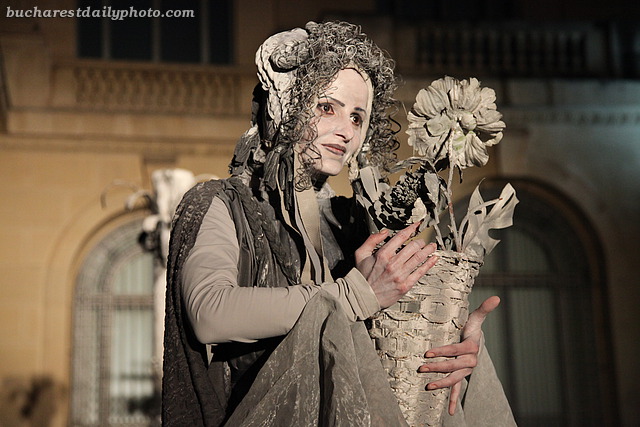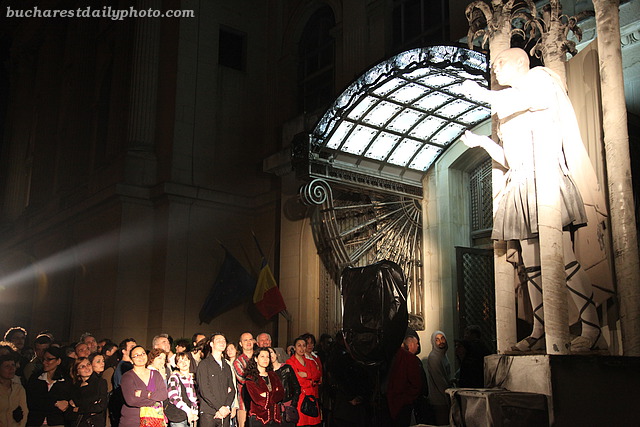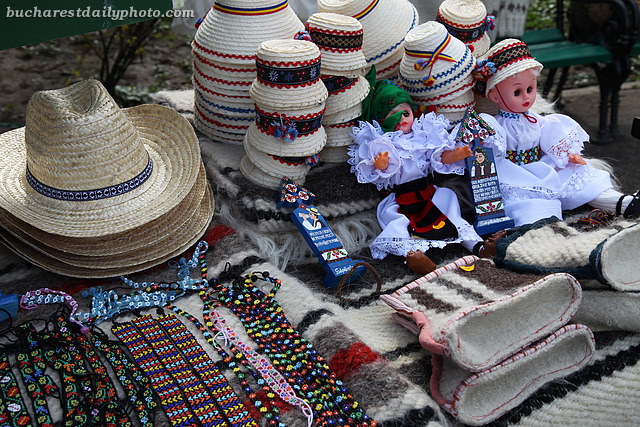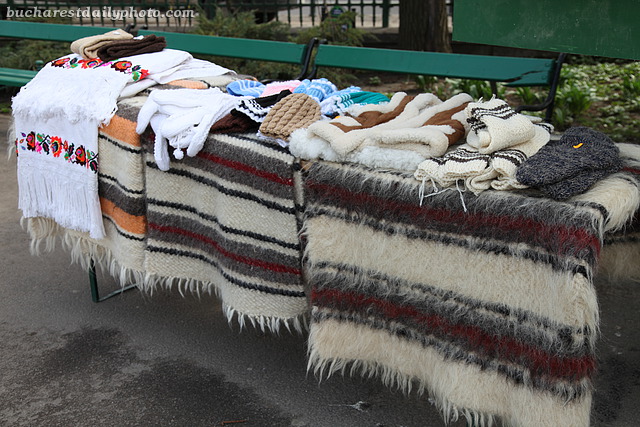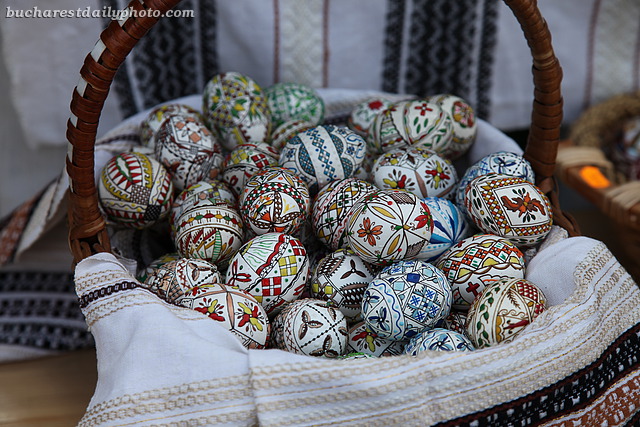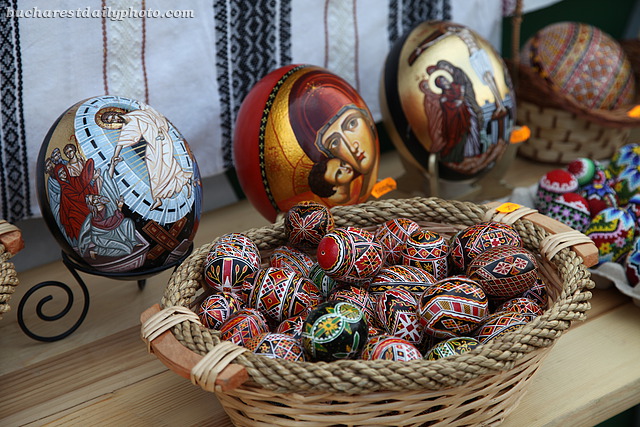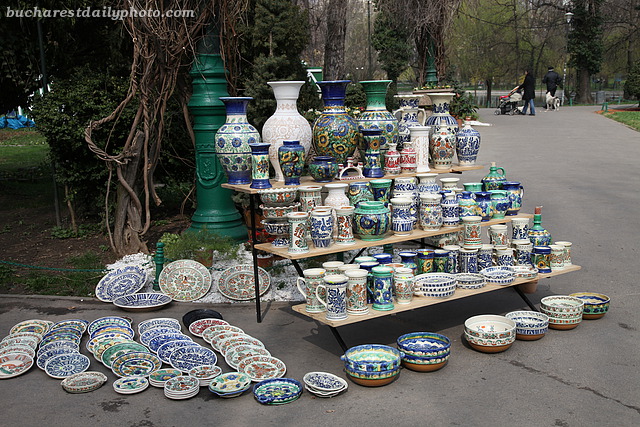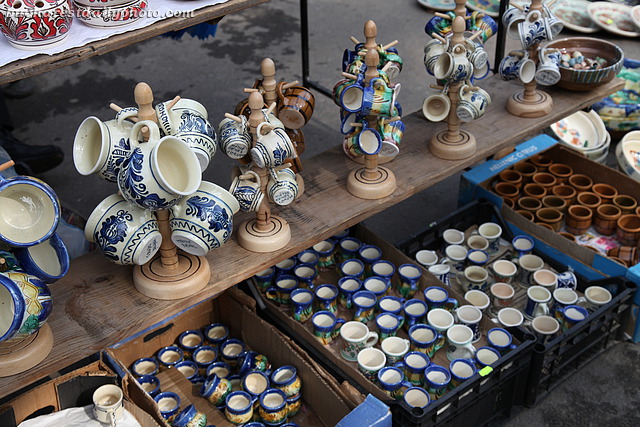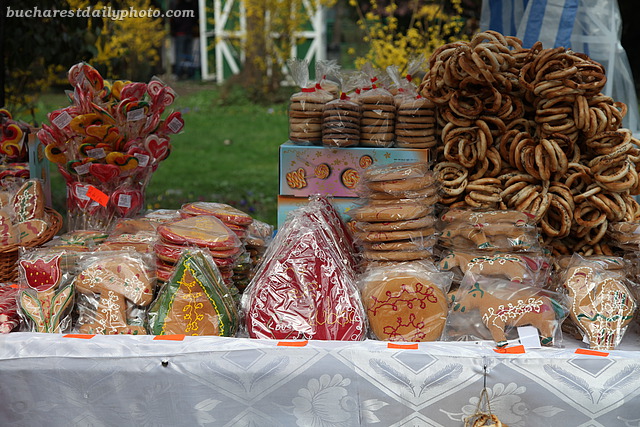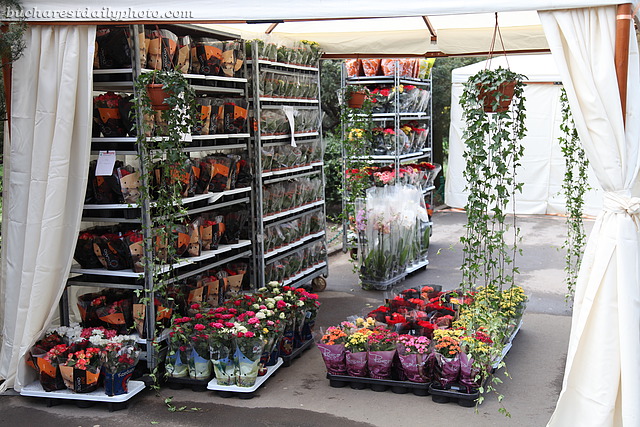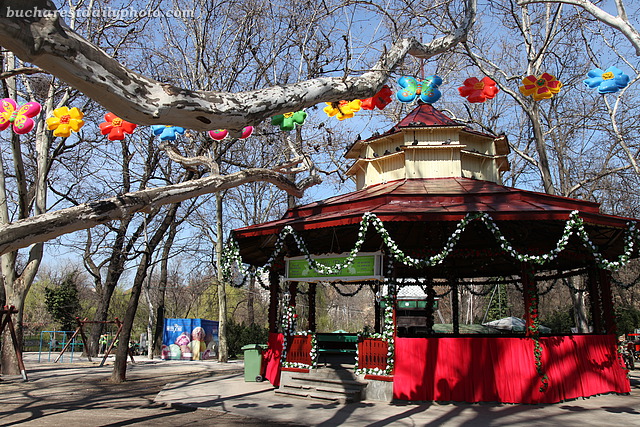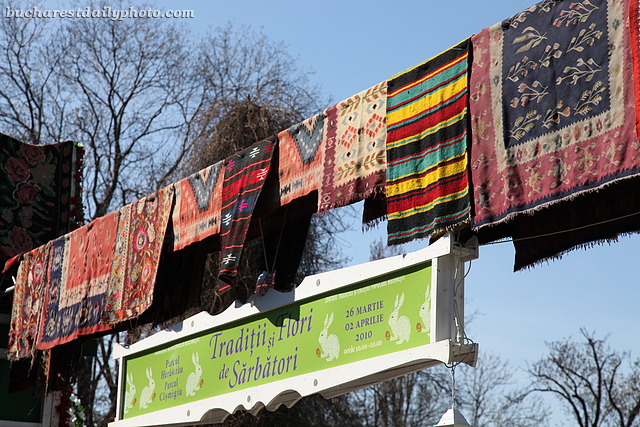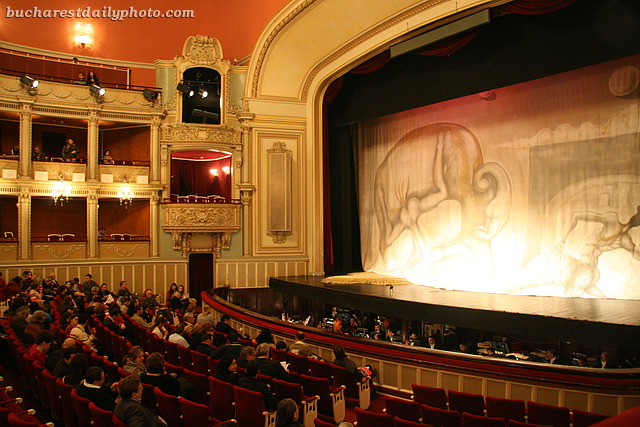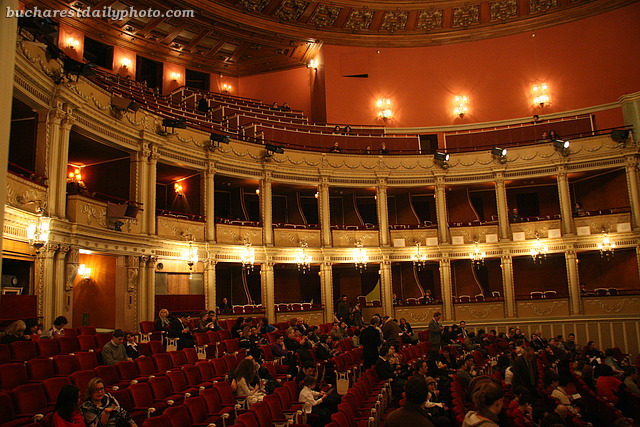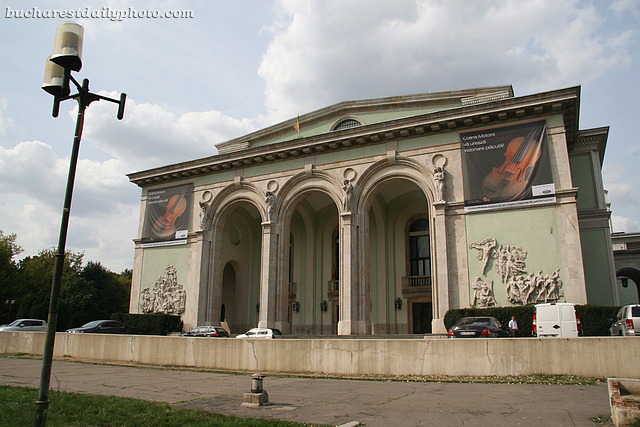These days Bucharest is hosting the 5th edition of the its International Literary Festival. I missed the first evening of the festival which featured Jonathan Coe and Will Self but on the second evening of the event I had the chance of seeing some of my favorite Romanian writers, Lucian Dan Teodorovici and Filip Florian, together with the Macedonian writer Goce Smilevski. The writers read fragments from their latest novels and answered to questions, all in all it a pleasant evening hosted by the Peasant’s Museum Club.
Even though Romania’s national team did not qualify to the European football (soccer) cup 2012, the competition is being closely followed by Romanians. After all, football is the king of sports here. Today’s photo show a people watching a game on a big screen placed in front of the Manuc’s Inn in Bucharest’s Old Center.
Since last year Bucharest has joined the example of other cities of the western world in offering free summer concerts of classical music. Going on from May 8th to September 25th, they start at 19.30 every Saturday and Sunday in Colțea Park, in the University Square, weather permitting of course. Did I mention they’re free? (or rather they’ve already been payed for from our taxes, I don’t really know to be honest).
On the 20th of September Bucharest celebrated its 551th anniversary, which is to say that 551 years have passed since September 20, 1459 when Bucharest was first mentioned in an official document. This was marked by “Bucharest Days”, a series of cultural events which included concerts and shows, movies, parades etc. The event featured in today’s photos was called “The Nomad Gardens – Art and Landscape”, and it was organized by the French Embassy and the French Institute of Bucharest. Their idea – if I understood it right – was to create a series of small gardens to point out the importance of green spaces in the urban landscape. These gardens were spread in six locations around Bucharest and every one represented a “reinterpretation of the idea of garden”. The photo above shows the installation at the French Institute, titled “Celular gardens, nomad and ephemeral objects”.
University Square – The blooming lawns
Roma Square – The green agora
George Enescu Square – The silver forest
Gara de Nord Train Station – The vegetal tunnel
Verona Square – Nomad Seeds
Good music, good sound, good show. Who said metal is dead? 🙂
For those unfamiliar with it, The Night of Museums is a cultural event organized together by multiple museums when all the participant institutions remain open late into the night and admittance is free. The idea behind the project is to introduce new people to cultural institutions. Articles I found on the web noted that on this year’s edition over 3000 museums in 39 countries remained open late Saturday night, May 15th. 12 museums took part in this year’s edition (the 6th) in Bucharest. As you can see from the photos, there were lines at the entrance, something that you never see otherwise. On the contrary, if you visit on a normal day you practically have the place to yourself. Most of the museums also had performance events, like plays, movies or music concerts. Today’s photos are from the National Art Museum, which presented a pantomime show called “The Statues” performed by Masca theatre company.
Here’s a few examples of what one can buy at the Easter fair. Of course I couldn’t help myself and bought some small cups that I have no need of.
The gazebo in Cişmigiu park has been decorated with the occasion of a spring fair titled “Traditions and flowers with the ocassion of (Easter) celebrations” (which in Romanian is shorter and it rhymes). Below you can see the fair’s banner hanging at the main entrance to the park.
Back in September I’ve posted a photo showing the facade of the Bucharest National Opera House (here). Yesterday night I got a chance to take a photo (actually, two photos) of the interior. It’s not as magnificent as other opera houses I’ve seen in my travels, but given the fact that it was built during the communist regime – whose architectural attempts focused on the practical rather than beautiful – I think it looks pretty good.
Bucharest’s Opera House is the main venue for seeing opera and ballet performances in Bucharest. Their annual season runs from October to June and tickets are usually dirt cheap, a far cry from tickets to Madonna’s concert 🙂 They tend to stick to a classical repertoire. Due to lack of funding the sets are not too spectacular but performances are of a high quality. The edifice was built in the years 1952-1953 after the design by a group of architects led by Octav Doicescu. These were the first years of communism in Romania and the style condoned by the regime was called “socialist realism“, the official artistic movement of the Soviet Union. The socialist realism required an artificial return to the classical theme, away from the modernist tendencies of the day, which is why the Opera building has a neoclassical design. One example of the socialist realism touch, that can be seen in the photo, are the bas reliefs on the facade. The interior is in the tradition of the 18th century Italian Opera, with a central dome and three tiers of balconies. It can seat 1200 people. The inauguration of the new building of the Opera House was celebrated by a performance of Tchaikovsky’s Queen of Spades on January 9th, 1954 followed by the ballet Coppelia the following night.
